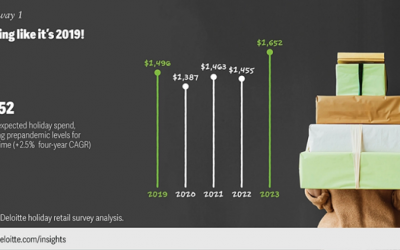Last week subscribers to my SoundADvice email newsletter learned we the advantages of knowing your competitors and finding ways or areas where you can exploit your competitors’ weaknesses and find areas where you can grow your business. As owners or managers of a...
Sound ADvice
Your Customers ALWAYS Have A Choice
Only fools believe their business has no competition. There are multiple ways to think about who your competition is, however, I'm going to define it in the simplest terms for businesses and that is customer money. If I have a need and you could supply that need for a...
The ROI Problem
I'm going to start off the new year with a story. In 2023 I was invited to be a guest speaker at Trine University and ended up presenting information to a class in October and was invited back to be on the judges panel for the students final project. The students had...
Business Lessons from “A Christmas Story”
With Christmas and New Years days falling on Monday's this season, I am going to take a couple weeks off from the podcast and even publishing next week Both will be updated with fresh material on January 8, 2024. In the meantime, I am sharing the content from last...
Are You Open to Ideas
How was your year? Are you excited about next year? As a business owner, or manager or even someone without a title, every once in awhile we should stop and plan for the future. Problem is many people do it alone, or with limited input. Last week subscribers of my...
Top 10 Holiday Shopping Days of 2023
If the experts are correct, retailers should get set for a very Merry 2023 shopping season. According to the 2023 Deloitte holiday survey, the holiday spirit and spending will rebound and consumers expect to spend $1,652, surpassing pre-pandemic levels for the first...
Building Momentum
Are you the type of person who jumps out of bed in the morning full of energy and ready to take on the world? Or are you like the rest of us adults who start a little slower, with a morning routine that perhaps includes a cup of coffee to perk up your senses and as...
Leadership Lessons
What does it take to be a leader? That question was asked of myself and a couple dozen others this summer at a half day retreat our company held in August. The answers were plentiful and good, as most of us were in a leadership position. Some of us had a leadership...
It’s Not Just The Facts Ma’am
First a few facts... We've gone thru a challenging number of years in the political world as divisions between Republicans and Democrats have become more prominent, at least at the national level in our country. Those on the left accuse those on the right of not...









